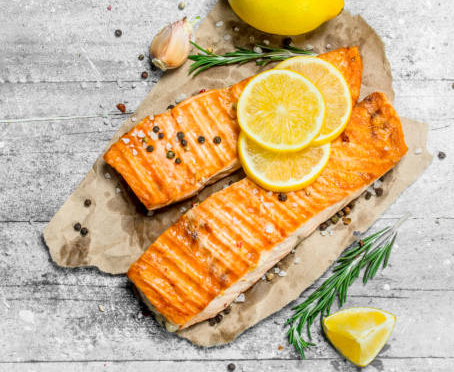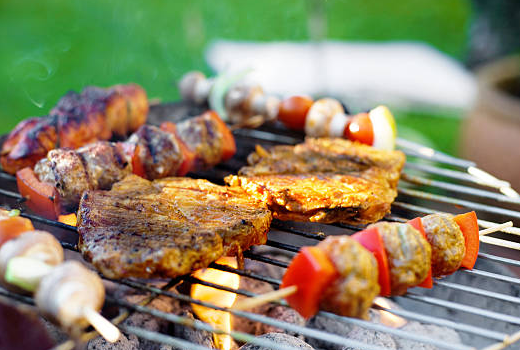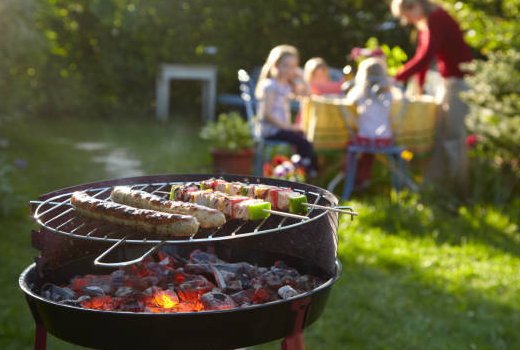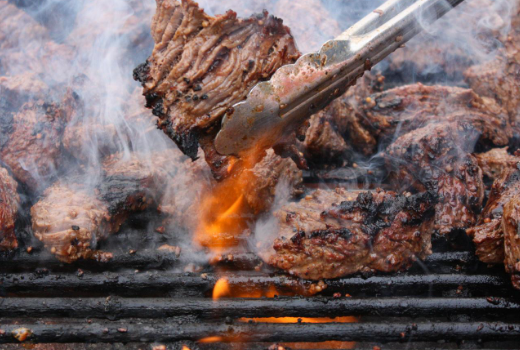Grilling the Perfect Salmon

Supercharged Energy and Goodness: GoGo-tummieZ Strawberry, Pomegranate & Pineapple
March 13, 2025
Why Pistachio Flour Is Your Pantry’s New Must-Have
March 16, 2025Grilling fish and seafood at home can be intimidating if you’re new to it, but you don’t need to be a gourmet chef to make perfect salmon. Its healthy fats make it flavorful and easier to cook than other seafood. Our test kitchen experts will guide you on how to make perfect grilled salmon with skin, salmon in foil, and more.
Salmon fillets and steaks are ideal for both charcoal and gas grills. The key is the grilling time, ensuring the fish is crispy. Follow these tips and then use your new skills to create delicious grilled salmon recipes. Heart-healthy grilled salmon, rich in protein and omega-3 fatty acids, offers a tender, melt-in-your-mouth dinner.
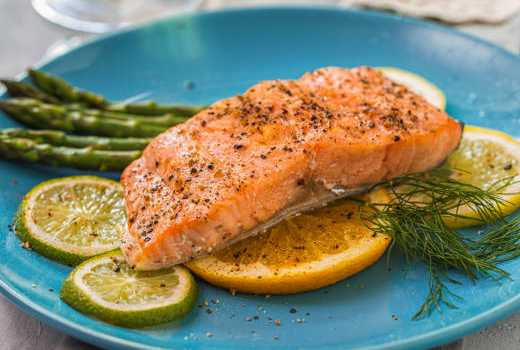
Grilled Salmon: Preparation Steps
The preparation for grilling salmon on the grill is quite simple.
Before grilling, rinse the fish and pat it dry with paper towels. If the fish is too wet, it might stick to the grill.
Whether grilling salmon with or without skin, the best way to add flavor is by using a dry rub or sprinkling spices or herbs (thyme, dill, or basil pair well with grilled salmon). Alternatively, marinate it. Salmon absorbs flavors quickly, so even marinating for just 15 to 30 minutes can add rich flavor to your grilled salmon.
How to Grill Salmon
With your fish prepped, it’s time to fire up the grill. If you’re planning to use a cedar plank, you can read up on grilling salmon on a cedar plank first; otherwise, here are a few things to keep in mind as you master how to grill salmon.
Grilling salmon with the skin on is perfectly fine. If the fillet still has skin, grill it skin-side down and remove the skin after it’s cooked.
Place fillets in an oiled grill basket to ensure they stay intact. Grilling salmon in foil (non-stick or oiled) also works well; just cut a few slits in the foil for the fish juices to drain. You can also grill salmon fillets and steaks directly on an oiled grill grate.
-
Direct Grilling: If you’re using a charcoal or gas grill for direct heat, place the fish directly on the grate over medium heat (175°C to 195°C / 350°F to 375°F). Close the lid and grill for 4 to 6 minutes per half-inch of thickness, or until the fish begins to flake when tested with a fork. If the fish is thicker, flip it once halfway through grilling.
-
Indirect Grilling: When grilling salmon with indirect heat on a charcoal or gas grill, prepare a grill for indirect cooking and have a drip pan ready. Place the salmon over the drip pan. Close the lid and grill over indirect medium heat for 7 to 9 minutes per half-inch of thickness, or until the salmon flakes when tested with a fork, flipping once halfway through if desired.
If you like, you can brush the salmon with olive oil or melted butter after flipping to add flavor and keep it moist.
How to Check if Salmon is Cooked
The grilling time for salmon depends on the thickness of the fish you’ve chosen. Thicker fish will take longer to grill.
- Check the fish in the thickest part of the fillet with a fork. It’s perfectly grilled when the flesh is opaque but still moist and flakes easily.
Another way to check for doneness is to measure the grilled salmon’s temperature with an instant-read thermometer. (This method is especially useful for thick salmon steaks.) Insert the instant-read thermometer horizontally into the fish. When the internal temperature of the fish reaches 140°F (72°C), remove it from the grill.
How to Choose Fresh Salmon
For the best results when grilling salmon, you’ll want to select fresh salmon or salmon that has been previously frozen and thawed. Here are some tips for picking salmon at the store.
-
Salmon with a moderate texture will hold together better when grilled. When shopping, look for moist, cleanly cut fillets or steaks, and avoid any fish with a strong “fishy” odor. Don’t be fooled by the color of the fish—it’s not a sign of freshness, but rather a sign of the salmon’s variety.
-
Plan to grill the salmon the same day you purchase it, or store it loosely wrapped in the coldest part of your refrigerator (away from the door, typically in the back and on a bottom shelf) for up to 2 days.
-
If it hasn’t been previously frozen, salmon can be frozen for up to 3 months.
-
Yes, it’s absolutely possible to grill frozen salmon. If your fish is frozen, thaw it in the refrigerator for 1 to 2 days before following our steps above to grill your salmon.

